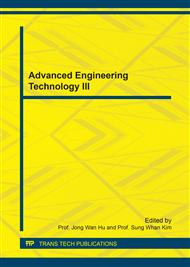p.496
p.502
p.508
p.518
p.525
p.532
p.539
p.547
p.554
Parametric Identification of Control Objects to Provide the Improved Accuracy on Start or End Point of Timing Response
Abstract:
This work considers the parametric identification problem of control objects and signals. The problem feature is the necessity of searching for an approximate solution that provides the improved accuracy of the transition process in the high (or low) values of time. This work suggests a variant that satisfies the requirements of accuracy and robustness to solve the problem. Based on using numerical methods to solve the problem, the variant has its own singularities. Firstly, its instrumental variable allows redistributing the maximum error of the approximate solution by the interval of transient process. Secondly, the variant is applied to the dynamic systems, transfer functions of which have fractional-rational, irrational and transcendental expressions. This work also leads the calculations to illustrate the suggested method that obtains an improved accuracy of the approximation in the initial and final fragments of the transient process.
Info:
Periodical:
Pages:
525-531
Citation:
Online since:
June 2017
Authors:
Price:
Сopyright:
© 2017 Trans Tech Publications Ltd. All Rights Reserved
Share:
Citation:


